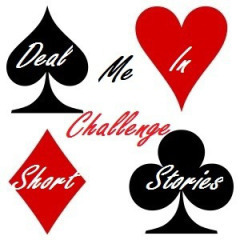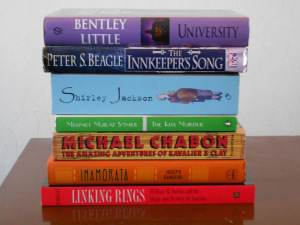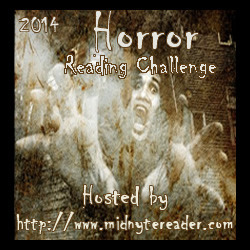Katherine Nabity's Blog, page 208
June 9, 2014
Magic Monday ~ The Great Harry Houdin
I like Mondays. On Monday, I am refreshed from the weekend and exhilarated by the possibilities of the week ahead. I also like magic. I like its history, its intersection with technology, and its crafty use of human nature. I figured I’d combine the two and make a Monday feature that is truly me: a little bit of magic and a look at the week ahead.
Quick: Name five magicians!
I’m now going to perform a great feat of mentalism and predict one of the magicians you thought of! One of those magicians was…Harry Houdini! Okay, it’s not a great feat of mentalism because everyone is always going to say Harry Houdini. Houdini cemented himself into the public consciousness with his talents and savvy self-promotion. (Also the naming of this post and the image below have probably primed your response. I won’t quit my day job…)
 Likewise, I’m almost certain that Harry Houdin was *not* on your list.
Likewise, I’m almost certain that Harry Houdin was *not* on your list.
Over a decade before Houdini was even born, Irishman Martin Harry Dignam, a supposed nephew of the great Jean Eugène Robert-Houdin (the man Houdini also pays homage to with his nom de guerre), rechristened himself as Harry Houdin and performed as a magician and polynational mimic in Australia and New Zealand. What exactly is a polynational mimic? Who exactly was this other Houdin(i)?
Magician Tom Interval provides a brief, very well researched biography of Harry Houdin. It’s available for download or online reading at Smashwords. Tom Interval is also the co-founder of Magic and the Mind, a magic and cognition/critical thinking program designed for young people.
What Am I Reading?
 I ultimately did give up on The Quick. I happily picked up The Map of Time by Félix J. Palma off my shelf before becoming involved with the Estella Project, Season Two and checking out The Ocean At The End of the Lane by Neil Gaiman from the elibrary. I’m enjoying The Map of Time, but Ocean is nice and short, so I’m not quite as fickle as I might seem.
I ultimately did give up on The Quick. I happily picked up The Map of Time by Félix J. Palma off my shelf before becoming involved with the Estella Project, Season Two and checking out The Ocean At The End of the Lane by Neil Gaiman from the elibrary. I’m enjoying The Map of Time, but Ocean is nice and short, so I’m not quite as fickle as I might seem.
I picked the nine of spades for Deal Me In which is a WILD card. I believe I’m going to use it on “An Occurrence at Owl Creek Bridge” by Ambrose Bierce.
What Am I Writing?
Working on formatting PHYSIC for CreateSpace. Then back to In Need of Luck. I’ll be investigating the contents of a duffel bag and/or rewriting the first meeting between Aleister and Benny.


June 8, 2014
Deal Me In, Week 23 ~ “The Mystery of Marie Rogêt”
Hosted by Jay @ Bibliophilopolis
“The Mystery of Marie Rogêt” by Edgar Allan Poe
Card picked: King of Diamonds
From: Read it online at http://www.eapoe.org/works/tales/rogetb.htm
Review: This is Poe’s second Dupin mystery, the first of course being “The Murders in the Rue Morgue.” This story is not as narratively strong as “Rue Morgue” and honestly it was a bit of a slog to get through. That doesn’t mean it wasn’t interesting.
“The Mystery of Marie Rogêt” is Poe’s solution to the mystery of Mary Rogers, a young woman who went missing and was later found dead in 1841. It was a big, sensational case, covered heavily by the newspapers. Poe’s story is a thin fictionalization, transposed from New York City to Paris, and given to Dupin to solve. Poe admits as much at the beginning of the tale, chalking it all up to coincidence. What follows the introduction is an in-depth run-down of the newspaper coverage (as research done by Dupin’s sidekick and our narrator) and Dupin systematically debunking the newspaper’s assumptions and pretty much calling them idiots.
As with “Maelzel’s Chess Player,” this is Poe turning his deductive reasoning toward a real-world problem and therefore sticking his neck out to a degree that Conan Doyle never did with Sherlock Holmes. His solution wasn’t entirely correct as it turns out, but is fairly solid considering the information he had. This scientific Edgar Allan Poe is what I would have loved to see in a movie like The Raven (2012).
Author Connection: Last year I picked up the book The Beautiful Cigar Girl: Mary Rogers, Edgar Allan Poe, and the Invention of Murder by Daniel Stashower and I don’t remember if I chose it because of the Dupin connection. Now, I want to read it despite the other eight books on my “Currently Reading” list.


June 6, 2014
Things I Think About ~ On Becoming a Self-Published Writer
Outside of the world of writers and book bloggers, I don’t know how much the Amazon/Hachette kerfuffle has made it to the mainstream (aka, friends and family who might read this via Facebook/Google+). Okay, you’ve probably seen the Stephen Colbert thing by now… Most of what I’ve seen in the media is very anti-Amazon and very black and white. The issue, of course, has a few shades of gray. I thought about posting something about these subtleties, but other people have done a better job of it:
Winning at Monopoly
The war on Amazon is Big Publishing’s 1% moment. What about other writers?
Amazon Is NOT the Vladimir Putin of the Publishing World
Now, obviously, both sides have interested parties. There are the likes of Colbert and James Patterson on one side, Hugh Howey and Joe Konrath on the other. In reality, this corporate conflict is highlighting the conflict between legacy publishing and the self-/indie publisher. Instead of going into that in a broad sense, I figured it might be more entertaining and useful to me if I gather my thoughts on why I am now a self-published author.
I’ve been writing since 1998. Well, if you count some literary short stories, longer than that. When I was ready to query Lucinda at the Window in 2000, there really wasn’t any legitimate way to self-publish. Most self-pub schemes ca. 2000 relied on authors paying exorbitant prices for poor quality products which the author would then try to sell to family/friends/extended family/passing strangers. Querying editors and agents was what you did. And it’s what I did. I did it with five novels over the course of 13 years.
By 2007, when I signed with Stone Garden to publish Lucinda, small presses had become viable, but still had difficulties. Due to advances in print-on-demand technology, small presses could put out affordable quality books without huge print runs. Unfortunately, what most of them didn’t have was budget or personnel. In 2007, I wasn’t ready to “sell” my own book and the one-man outfit of Stone Garden Publishing wasn’t going to do it for me.
I continued to be a proponent of legacy publishing. To me that was still the legit way to be published. I still believed that a good book would get published if it encountered the right agent on the right day. In the meantime, there were authors gaining audiences and making money through self-publishing ebooks through new services, but hey weren’t just writers anymore. They had to be their own marketing and promotional department. That sounded utterly distasteful to me, but more and more new and mid-list writers were being required to do that even if they were signed by one of the Big 6 (now Big 5) publishers.
Social media was really the catalyst that changed my opinion of the legacy publishing game. It became easier to get to know agents and to find out what they wanted through their blogs and tweets. The #MSWL (ManuScript Wish List) tag on Twitter gave agents a way to share exactly what they wanted in real time. And it became fairly obvious that what they wanted wasn’t what I had to give them.
Math isn’t hard, but in this case it is depressing, so I won’t count up the number of rejections I garnered in 13 years of submissions. I’ll be honest, two of the novels I subbed weren’t ready. One of them has been set aside; one of them became a totally different novel. It could be that maybe, painfully, I’m just not a good writer. Maybe I’m stupid for spending 13 (now 14) years in an industry I’m not suited for. I’m going to disagree. I think the books I’ve written and that Eric and I have written are pretty darn good. (The book Eric has written alone is PDG too, although I might be biased.) It sounds cliche but I write books I would want to read.
The notion that I am now relying on is this: Even if agents (a small group of people with tastes that differ from mine) don’t want to sell my novels, there might be other people like me that would want to read them. Why not get the books directly to them?
Obviously, it’s not that simple. Promo and marketing is, as I suspected, as much work as writing. Eric and I are trying to cultivate an audience with the hopes that our efforts will pay dividends later. I will be honest, Amazon is pretty central to what we’re doing. They are one of our primary distribution channels. Amazon is giving me, and so many other authors outside of legacy publishing, an outlet to deliver product to readers who might want that product.
Math isn’t hard, but it is annoying when it comes to counting up how many copies of my and Eric’s novels have been downloaded. (Smashwords gives me a total number. Amazon gives me a choice of reports, but none include total numbers for the entirety of a book’s life…) Sure, not every person will read the books they’ve downloaded or enjoy them. But the number of readers I have today is certainly greater than the number I’ve had for the first 13 years of my career. For the moment, I’m pretty happy with that.


June 5, 2014
Thoughtful Thursday: Multiple Editions
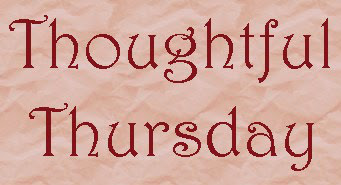
Hosted by Pamela @ Reading is Fun Again
This Thursday’s question:
Have you ever bought multiple editions of the same book? What inspires you to do that (e.g., covers, language, author revisions)?
I’m pretty form agnostic when it comes to books. I’ve never had much preference for hardbacks over paperbacks aside from their availability and price. When I started reading the Wheel of Time, Eric and I decided to seek out good used copies in full-sized hardbacks, which is more difficult than you might think. Likewise with Martin’s Song of Ice and Fire and Herbert’s Dune books. Unfortunately, I’m too cheap to be a collection completist and still have a mish-mash of paperbacks and hardbacks.
I have a passing interest in translations and have several different translations of Beowulf and some Russian poetry. There are other “classics” I’ve owned in a myriad of editions: Doyle’s Sherlock Holmes stories, various copies of The Canterbury Tales and random Shakespeare plays, collections of Poe. Some have been gifts, some have been upgrades from Dover $1 editions to hardbacks, some have been repurchases when, in college, the original was residing in a different city.
Lately, of course, I’ve begun to acquire Kindle editions of some of my favorites. I mean, really, what’s better than having a library of your comfort books in your purse/backpack? Of course, my most ironic moment of ebook collecting has come when I was a little annoyed that there isn’t an electronic version of 84, Charing Cross Road. Considering Helene Hanff’s opinions of paste-board hardbacks, I can’t imagine what she’d think of a Kindle or PDF.


June 4, 2014
Summer 2014 #EstellaProject
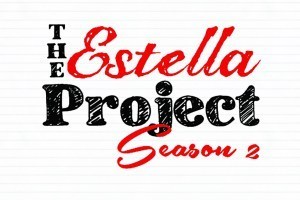 I’ve been seeing lots of summer reading lists around and feeling pangs of envy. Unlike seemingly everyone else, my school never had required summer reading. (Is this a generational thing? Meant to keep students engaged and out of trouble?) But, schooly that I was, I would have loved it. Now, the Estella Project has got me covered.
I’ve been seeing lots of summer reading lists around and feeling pangs of envy. Unlike seemingly everyone else, my school never had required summer reading. (Is this a generational thing? Meant to keep students engaged and out of trouble?) But, schooly that I was, I would have loved it. Now, the Estella Project has got me covered.
The Goal? Pick a couple books (or more) from the list. Read ‘em, review ‘em, link ‘em.
The Estella Project Summer Reading List
Strangely, I plan to read the first two:
The Amazing Adventures of Kavalier and Clay by Michael Chabon
The Ocean at the End of the Lane by Neil Gaiman
I want to get another fantasy done for Once Upon a Time VIII, so expect to hear from me about the Gaiman before the solstice. I’ve had The Amazing Adventures of Kavalier and Clay on my shelf for quite some time. I even used it recently as part of a book rainbow!
I might also read Geek Love by Katherine Dunn or reread Something Wicked This Way Comes, but I’m not gonna go crazy. ;)


June 3, 2014
Review ~ The Best Horror of the Year, Volume Six
This book was provided to me by Night Shade Books via Edelweiss in exchange for an honest review.
The Best Horror of the Year, Volume Six by Edited by Ellen Datlow
With each passing year, science, technology, and the march of time shine light into the craggy corners of the universe, making the fears of an earlier generation seem quaint. But this “light” creates its own shadows. The Best Horror of the Year, edited by Ellen Datlow, chronicles these shifting shadows. It is a catalog of terror, fear, and unpleasantness, as articulated by today’s most challenging and exciting writers.
The best horror writers of today do the same thing that horror writers of a hundred years ago did. They tell good stories—stories that scare us. And when these writers tell really good stories that really scare us, Ellen Datlow notices. She’s been noticing for more than a quarter century. For twenty-one years, she coedited The Year’s Best Fantasy and Horror, and for the last six years, she’s edited this series. In addition to this monumental cataloging of the best, she has edited hundreds of other horror anthologies and won numerous awards, including the Hugo, Bram Stoker, and World Fantasy awards.
More than any other editor or critic, Ellen Datlow has charted the shadowy abyss of horror fiction. Join her on this journey into the dark parts of the human heart . . . either for the first time . . . or once again. (via Goodreads)
Short fiction is a great way to keep up with writers and trends. I’ve often read the Hugo and Nebula nominated short stories to see “what’s up” in the world of science fiction and fantasy. Those stories are often available online. Horror is more difficult to keep tabs on for free. Usually, none of the Stoker nominated stories are available. I’m not sure what that says about the respective genre markets… Therefore, I am left with the occasional horror anthology.
Things that surprised me about this anthology:
Few zombie stories. I’m not complaining, I’m not a fan of zombies. Are zombies on the way out as a trend? I can only hope.
How many UK writers are in this anthology (at least 9 of 24). Again, not complaining; just an observation.
No overlap between this anthology and the Stoker nominations. I would have thought that maybe one or two stories would overlap, but nope. None.
The stories were all pretty solid, though varying in the amount of “horror” present. Of course, that’s a double whammy of subjectivity in a horror anthology. What are the “best” stories that define “horror.”
Stories that stood out for me:
On the severely creepy end of the spectrum, “Apports” by Stephen Bacon and “Bones of Crow” by Ray Cluley. Apports are “little gifts from elsewhere.” But sent by whom? Ray Cluley’s story probably wins for the goriest of the anthology. Both these tales feature people who are just trying to get by in life and find no help from the supernatural.
There were three stories with particular Victorian flair and were obviously up my alley. “Mr. Splitfoot” by Dale Bailey is written from the point of view of Maggie Fox, one of the young girls behind the founding of the spiritualist movement. Maybe they weren’t entirely charlatans… “The Soul in the Bell Jar” by K. J. Kabza is sort of a Frankenstein tale in overdrive in a horror/fantasy world where souls are routinely sewn back onto bodies. Tim Casson’s “The Withering”introduces us to Miss Appleby, a Victorian heroine with a peculiar machine for contacting spirits. I’d read more of Miss Appleby if there was more to be had.
Two stories took horror on from a movie angle. “The House on Cobb Street” by Lynda E. Rucker is a solid haunted house story told in a found-footage kind of way, partially using blog posts and forum comments. Kim Newman’s “The Only Ending We Have” tells the story of Jayne Swallow, a body-double for Janet Leigh in the famous Psycho shower scene. Familiarity with the movie certainly helps in this story.
Speaking of Hitchcock, “Jaws of Saturn” by Laird Barron has a very noir, hitchcockian feel to it that reminded me strongly of Curse of the Demon even though the two stories have little in common.
Other stand-outs: “Call Out” by Steve Toase for using a bargest in his story. An underused creature if ever there was one. And to Neil Gaiman for “Down to the Sunless Sea” which was the only reread for me.
Publisher: Night Shade Books
Publication date: June 3rd 2014
Genre: Horror
Why did I choose to read this book? Haven’t read much good horror in a while.


June 2, 2014
Magic Monday ~ Erdnase & Weird Lit
I like Mondays. On Monday, I am refreshed from the weekend and exhilarated by the possibilities of the week ahead. I also like magic. I like its history, its intersection with technology, and its crafty use of human nature. I figured I’d combine the two and make a Monday meme that is truly me: a little bit of magic and a look at the week ahead.
Probably a decade ago when my hands started to be especially creaky, I decided I needed some way to exercise them. I ordered two books: World’s Best Card Tricks and The Expert at the Card Table by S. W. Erdnase. Little did I know that the Erdnase book would become the basis of my magic text collection. First published in 1902 as Artifice, Ruse and Subterfuge at the Card Table, I was reminded last week of how much I like its writing.
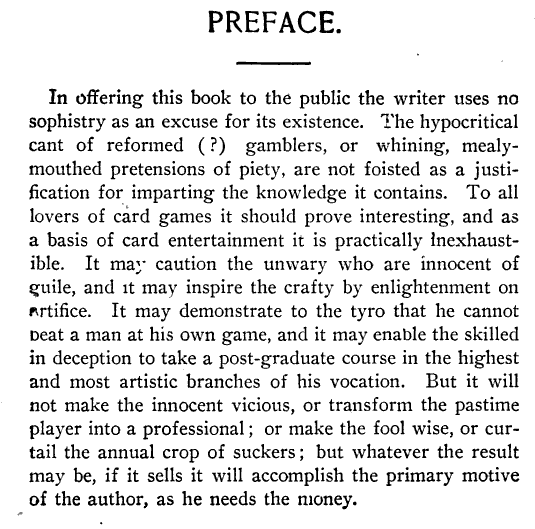
Read Artifice, Ruse and Subterfuge at the Card Table via The Conjuring Arts Research Center
Read more about the enigma of S. W. Erdnase
 What Am I Reading?
What Am I Reading? Undecided on whether I want to finish The Quick. I don’t want to DNF another ARC, but it pretty much killed my desire to read this past weekend. I really enjoyed the first 25%. But then, well, the book changes just like one of its characters. From the other reviews I’ve read, it doesn’t really get much better. I have so many other things to read…
Undecided on whether I want to finish The Quick. I don’t want to DNF another ARC, but it pretty much killed my desire to read this past weekend. I really enjoyed the first 25%. But then, well, the book changes just like one of its characters. From the other reviews I’ve read, it doesn’t really get much better. I have so many other things to read…
Like The Feel of the City: Experiences of Urban Transformation by Nicolas Kenny, which seems to be a better way to spend my time.
For Deal Me In, I’ll be reading “The Mystery of Marie Roget” by Edgar Allan Poe, and for the WeirdLit Reddit’s reading discussion, “Pinholes in Black Muslin” by Simon Strantzas. I’m also reviewing Shirley next week and want to read a few applicable Shirley Jackson stories. Starting off the summer month of June in October fashion.
What Am I Writing?
Back to work on In Need of Luck. When I last worked on it, I had bone-headedly overwritten the wrong file when backing things up and had to rewrite a week’s worth of work. Now that I’ve had a break maybe I’ll be able to work on it without reliving the frustration. Writing is hard enough that it shouldn’t be attempted while simultaneously kicking oneself.
So, what are you reading? Any magic to share?


June 1, 2014
What Else in May
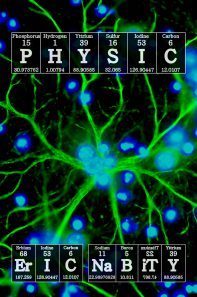 PHYSIC, Eric’s first solo novel, is out in the world. And it’s doing well download-wise. As with Model Species, we’re going free with PHYSIC, at least for the time-being (and at least in the US. It’s price-matched at Amazon and that doesn’t always carry over internationally). It’s pretty much blowing away all our previous releases. (And, Eric has his first review at Amazon! And it’s a good one. Celebratory donuts will be had!)
PHYSIC, Eric’s first solo novel, is out in the world. And it’s doing well download-wise. As with Model Species, we’re going free with PHYSIC, at least for the time-being (and at least in the US. It’s price-matched at Amazon and that doesn’t always carry over internationally). It’s pretty much blowing away all our previous releases. (And, Eric has his first review at Amazon! And it’s a good one. Celebratory donuts will be had!)
If you’re interested in a hard science take on superheroes with an autistic main character, please, give it a look! It’s available at Amazon (Kindle), Smashwords, and B&N (Nook).
The first portion of May was spent on some false starts with In Need of Luck, followed by another re-read of PHYSIC and a final formatting pass. And then this last week has been Armchair BEA, which I mostly approached as a reader rather than a writer. Regarding In Need of Luck, it feels like it’s been a while since I’ve really sat down and written on a project with Eric. It’s going to take some readjustment.
Other Life Stuff
Not a heck of a lot went on in May that wasn’t reading or writing. I’m not playing women’s frisbee league and generally ultimate winds down in the summer.
Before Bout of Books, I decided to lay off on reading (and worrying about) ARCs. This was mostly in response to adding my ebooks to Goodreads. I own …a lot… of books that I have not read. I still have a few ARCs to finish up and I’ll take a gander at NetGalley occasionally, but I intend to be much more picky in the future.
Armchair BEA was fun and exhausting for an introvert like me. I commented more than I’ve ever commented. Loaded more blogs than I’ve ever loaded. My RSS list grows. It was especially nice to run into a good group of non-fiction readers. Non-fiction is only about 25%-33% of what I read, but I’m happy to see other bloggers who are passionate about it.


Deal Me In, Week 22 ~ “In the Teeth of Glory”
Hosted by Jay @ Bibliophilopolis
“In the Teeth of Glory” by Dave Wolverton
Card picked: Seven of Spades
From: David Copperfield’s Tales of the Impossible
Review: Everyone has encountered a little old lady like Henretta. She’s never mean to anyone to their face, but she never has a kind thing to say about anyone out of their hearing range. She’s judgmental, but knows that she never does wrong. She believes she’s a good Christian.
Wolverton’s story asks why. What is it about life that forms someone like Henretta? Is it her neighbors who don’t share her views? Her grandson and great-grandson have moved her from neighborhood to neighborhood when things get too much for her. Is it due to the awfulness of her husband’s death? She believes that he dragged part of her soul with him and will dramatically tell you that this is the case. Is it because she’s maybe a little mentally ill and prone to fits of paranoia? Or is it something tied to an old Indian legend about the taste of souls?
Despite my teaser there, this story was very light on speculative elements. It meanders a bit, but does a decent job of making Henretta at least a little sympathetic. Aging…it isn’t for the faint-hearted.
About the Author: In Copperfield’s intro to this story, he cops to only being familiar with Dave Wolverton as the author of The Courtship of Princess Leia. Which, despite being an award-winning author in both literary and genre circles is where I know him from too. (I used to read a lot more Star Wars fiction when it was the only Star Wars to be had. Also, Copperfield is a Star Wars fan?)
Is This Your Card?


May 30, 2014
Armchair BEA ~ Topic of Choice: Non-fiction!
It’s Friday and time for Armchair BEA‘s Topic of Choice. While I love novels and adore short stories, I’d like to spend a few minutes on a “genre” that doesn’t seem to get a lot of love from the book-blogging community: Non-fiction.
Personally, I’m of the opinion that everything is narrative. We’re creatures of tale-telling. For better or worse, we make sense of the world by framing things in the form of stories. We want cause and effect. We want a beginning, a middle, and, most importantly, an ending.
When we watch sports, we like to hear about the athlete’s back-story and give dramatic structure to a game’s ebb and flow. We want scientific inquiry to be discrete, and while story-telling is good for creating hypotheses, it’s bad when we need to re-evaluate conclusions. Who wants to continually re-write the ending? One of the most interesting aspects about dealing with a chronic illness is the fact that the story of my arthritis has no conclusion and people are uncomfortable with that. When we talk of being sick it’s in terms of “getting better” and “beating it.” It doesn’t quite make sense when there is no good ending.
I’ve also found non-fiction to be more satisfying lately because, as an author, I need to know how the world works. I believe in a orderly world. If you know the systems, you can apply them. I’d really like to write a historical fiction about Omaha in the early 1900s involving several magicians who lived at the time. Not only has my research included them, but the city, the magic and technology of the era, economics, religion… It’s a long list of stories within stories!
So, here are links to some of the non-fiction I’ve really enjoyed, the best of best perhaps. Click on the covers for links to Goodreads.
History
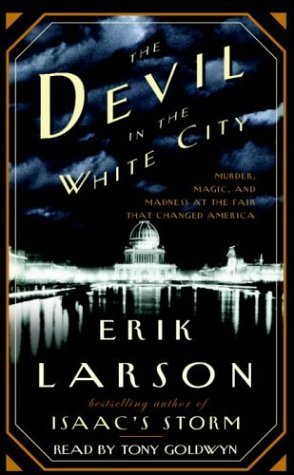
Review

Review

Review
Other Topics

Review

Review

Review
Memoirs

Review

Review

Review
Do you blog about non-fiction? What non-fiction surprises have you read?




